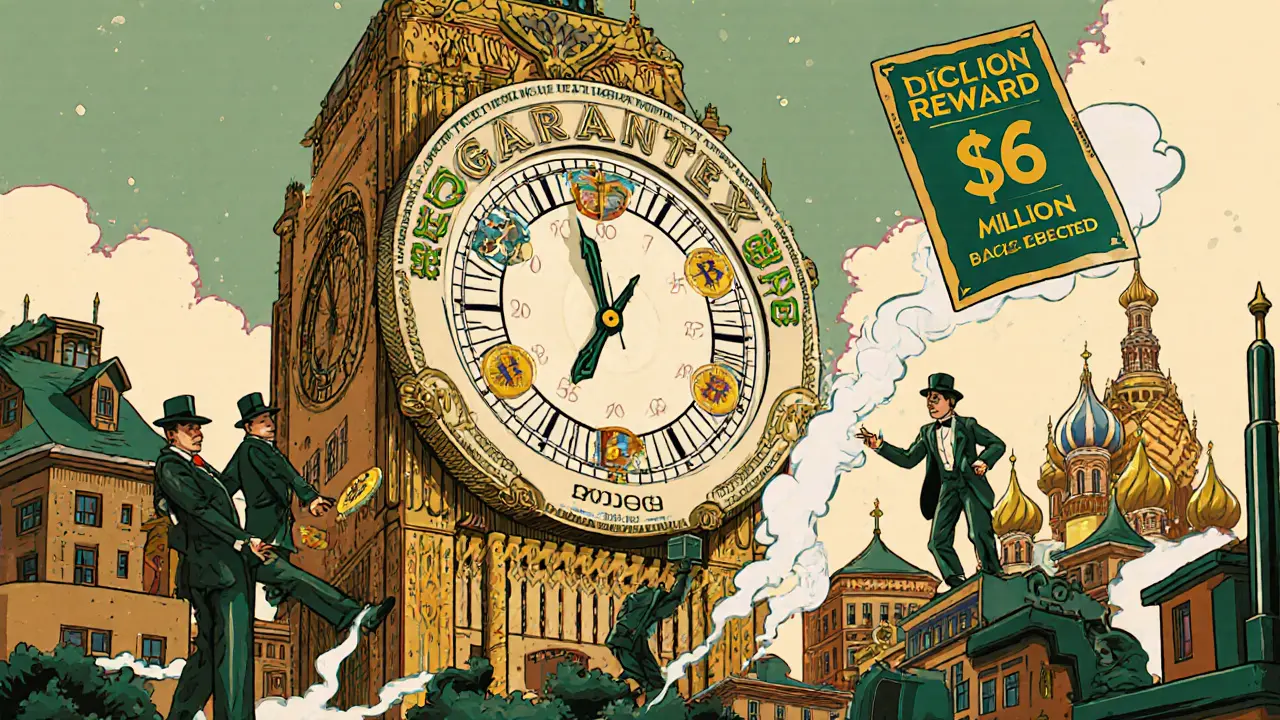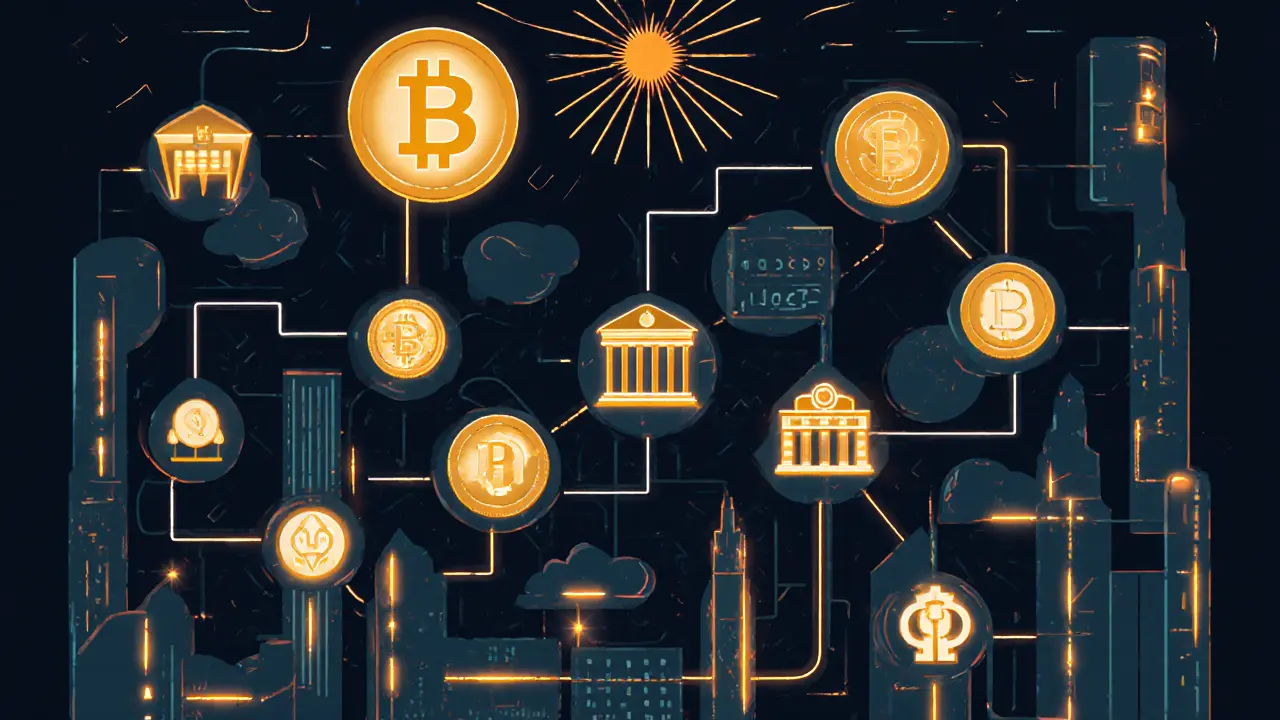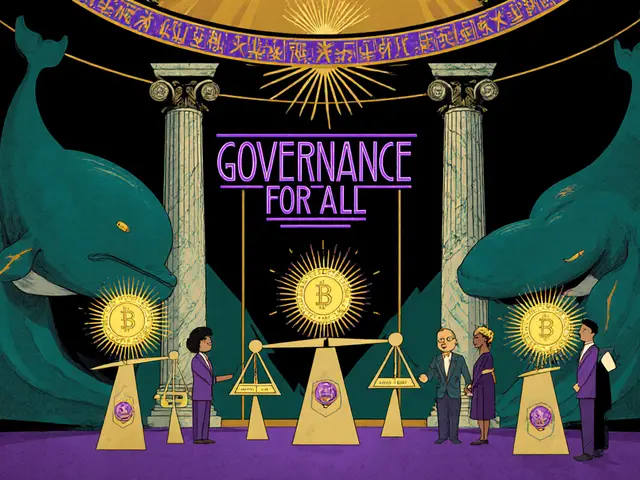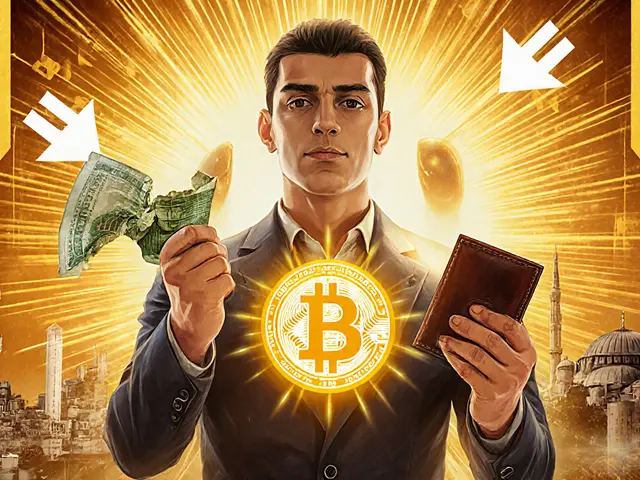Russian Crypto Transfer Cost Calculator
This calculator shows the costs associated with using sanctioned Russian crypto networks like Grinex, Exved, and MKAN Coin. Based on reports from Russian traders, fees have increased significantly following U.S. and EU sanctions.
Garantex sanctions hit Russian crypto traders hard - but they’re not stopping
On April 5, 2022, the U.S. Treasury slapped sanctions on Garantex, a major Russian cryptocurrency exchange. At the time, many assumed this would cut off Russian traders from global crypto markets. But by August 14, 2025, the Treasury came back with an even stronger move - re-designating Garantex under a new executive order, this time for directly enabling ransomware gangs and darknet markets. They claimed the platform had processed over $100 million in illicit crypto transactions since 2019. Yet, Russian traders didn’t disappear. They adapted.
Today, Garantex doesn’t really exist as a single website. It’s a ghost network. Its operators moved operations to shadow platforms like Grinex, Exved, and MKAN Coin. These aren’t just backups - they’re upgrades. Built to slip past sanctions, they use Telegram bots, Hong Kong shell companies, and Alfa-Bank accounts to move money without leaving a trace in Russian banking systems. For Russian crypto users, the system still works. It’s just harder, slower, and more expensive.
How the Garantex ecosystem bypasses sanctions
Here’s how it actually works on the ground. A Russian trader wants to send rubles abroad. They don’t go through a traditional exchange. Instead, they transfer rubles to a Hong Kong-based company called Feilian Company Limited. This company has an account at Alfa-Bank - yes, a Russian bank. But here’s the twist: Feilian also holds foreign bank accounts in Dubai, Spain, and Thailand. Once the rubles hit Feilian’s account, they’re converted into USDT (Tether), dollars, or yuan, and sent out to international recipients.
The crypto part? Invisible to banks. The bank sees a payment from Feilian to a foreign electronics supplier. It doesn’t know the original sender was a trader in Novosibirsk trying to buy Bitcoin. The crypto layer sits between the ruble deposit and the final dollar payout. This multi-step process, documented by Transparency International Russia in September 2025, is now standard for thousands of Russian users.
And it’s not just individuals. The Treasury’s August 2025 report tied Garantex’s network to a Russian ransomware-as-a-service operation and one of the world’s largest darknet marketplaces. That’s not rumor - it’s forensic evidence from blockchain analysis. Over 60% of Garantex-linked transactions in 2024 were traced to known criminal addresses, according to Chainalysis.
Traders pay more, wait longer, and learn on their own
Life on the Garantex network isn’t easy anymore. Before the March 2025 crackdown, users could get set up in a week. Now, new users report needing 3 to 4 weeks just to get access. Why? Because verification is now done through Telegram bots, not customer support. These bots give basic instructions - no emails, no live chat, no help desk.
Transaction fees have jumped from 0.1% to as high as 1.5%. One user on the Russian forum BitBrothers said, “I used to send $5,000 for $5 in fees. Now it’s $75. I still do it because I have no other choice.”
And the quality of information has dropped. Before, users could find guides, tutorials, and even video walkthroughs. Now, everything’s scattered across private Telegram channels. Newcomers rely on word-of-mouth from people who’ve been through it. “I spent two weeks asking strangers on Telegram just to figure out how to link my wallet,” said a 28-year-old trader from Kazan in an iStories.media interview. “No one helps you. You just figure it out or give up.”

The scale of the network - and why it’s growing
Despite all the pressure, Garantex’s ecosystem is bigger than ever. Transparency International Russia estimated in September 2025 that the network moves around $300 million per month. That’s 15% of all Russian crypto-based international transfers. The Central Bank of Russia reported 18.7 million crypto users in June 2025 - up 22% from the year before. Most of them aren’t speculators. They’re people trying to protect their savings from inflation, buy foreign goods, or send money to family abroad.
The Treasury sanctioned six other companies linked to Garantex - including A7, InDeFi Bank, and Exved - but that didn’t shut them down. Exved, headquartered in Moscow’s International Business Center, now handles cross-border payments for dual-use goods imported into Russia. That means it’s not just crypto - it’s medical equipment, electronics, and industrial parts. The network is no longer just a crypto exchange. It’s a financial lifeline for Russia’s underground economy.
Law enforcement is fighting back - but the game is changing
The U.S. Secret Service, German police, and Finnish authorities seized three Garantex domains and froze $26 million in crypto in March 2025. They arrested Aleksej Besciokov in India. The State Department put up a $6 million reward - $5 million for the arrest of Aleksandr Mira Serda, Garantex’s co-founder.
But the network didn’t collapse. It evolved. Grinex, created by former Garantex employees, now serves as the main front-end. It looks different. It runs on different servers. But the same people are behind it. Chainalysis CEO Michael Gronager said in September 2025, “Sanctions are creating more sophisticated, harder-to-track money laundering systems rather than eliminating them.”
That’s the new reality. Western sanctions were designed to isolate Russia from global finance. But crypto doesn’t care about borders. It doesn’t need SWIFT. It doesn’t need banks. All it needs is an internet connection and a Telegram app.

What’s next for Russian crypto traders?
There’s no sign this will end soon. The Russian government hasn’t cracked down on these platforms - in fact, they’ve stayed silent. Why? Because they benefit. The system keeps capital flowing, imports coming in, and elites protected. Meanwhile, the U.S. is expanding its sanctions list, but each new target just forces the network to split further - into more jurisdictions, more intermediaries, more layers of obfuscation.
For Russian traders, the choice is simple: use the Garantex ecosystem or lose access to global markets. Most choose the former. They’ve accepted higher fees, longer waits, and zero support. They’ve learned to trust strangers on Telegram more than official institutions.
And as long as inflation keeps rising in Russia and Western goods stay out of reach, this system won’t fade. It will keep adapting. Because when people need to move money, they’ll always find a way - even if it means building a shadow financial system from scratch.
Frequently Asked Questions
Is Garantex still operating as a website?
No. The original Garantex website was taken down after U.S. and European law enforcement seized its servers in March 2025. But its operators launched successor platforms like Grinex, Exved, and MKAN Coin. These platforms function the same way - they just use different domains, servers, and Telegram bots to avoid detection.
Can Russian users still buy Bitcoin after the sanctions?
Yes. Russian users can still buy Bitcoin and other cryptocurrencies through the Garantex ecosystem. They convert rubles to USDT via intermediary companies like Feilian Company Limited, then send the crypto to international wallets. The process is slower and costlier than before, but it still works.
Why do Russian traders use Tether (USDT) instead of Bitcoin?
USDT is preferred because it’s stable, widely accepted internationally, and easier to convert into fiat currency through shell companies. Bitcoin’s price volatility makes it risky for moving savings. USDT acts like digital cash - it holds its value and moves quickly across borders without triggering bank alerts.
Are these platforms legal in Russia?
Technically, no. Russia’s Central Bank bans unlicensed crypto exchanges. But enforcement is inconsistent. The government hasn’t cracked down on these networks because they help bypass Western sanctions and keep foreign currency flowing into the country. As long as they don’t openly advertise, they operate in a gray zone.
How much money is being moved through this system?
Transparency International Russia estimated in September 2025 that the Garantex network moves about $300 million per month. That’s roughly 15% of all Russian crypto-based international transfers. The total volume since 2019 exceeds $5 billion, according to blockchain forensic reports.
What happens if a Russian trader gets caught using Garantex?
There’s no public record of Russian citizens being prosecuted for using these platforms. The risk is mostly financial - frozen wallets or被骗 (scammed) by fake agents. The real targets are the operators, not users. As long as traders don’t openly brag about it or use it for obvious criminal activity, they’re unlikely to face legal consequences in Russia.



